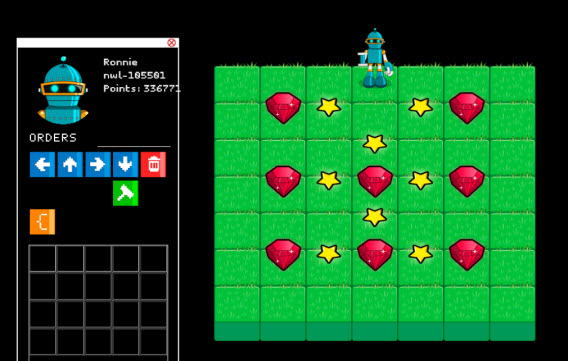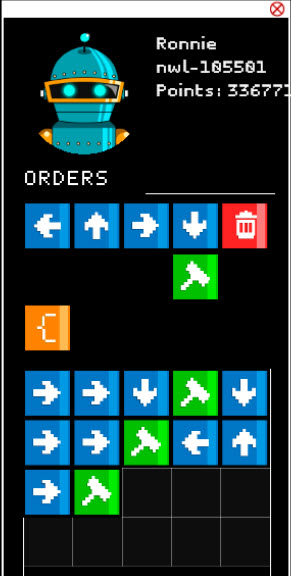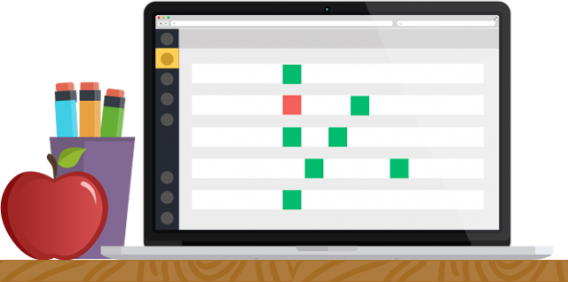For those who didn’t grow up in the internet age, a line of code might seem like a string of random characters hastily put together with virtually no logic or pattern. On the contrary, code is the basis of every programming language that’s used to create the webpages, apps, and games we use on a daily basis. Not surprisingly, it’s becoming increasingly important to know how to read and create this code.
Like learning any language, it’s better to start young, and games like Bomberbot are taking advantage of the sponge-like brains of children to teach the basics of coding from an early age.
Bomberbot
Bomberbot is an online game targeting children aged 8 to 12, teaching programming by helping them recognize the patterns and sequence structures involved in writing a line of code.
Playing as a robot, your task is to get through each level, collecting stars or destroying rubies by creating a sequence starting with directional arrows, brackets, and a hammer. As you advance, you’ll have more obstacles in your way and get more tools to be able to make your way around more complex levels.

A panel on the left gives you the tools you need to make it through a level. By clicking on a command, you can create a sequence for the robot to follow. Within the brackets, you can create shorter sequences that the robot will repeat a specified number of times.

At first glance, it might be hard to understand how such a simple game can teach kids to code, especially because there actually isn’t much code in the game.
According to Bomberbot CEO Cristian Bello, however, “it’s not necessary to see lines of code, you just need to start developing the logic to see how these things work.” This, of course, is the foundation to properly learning any language.
Consider written language. There are hundreds of different languages that use different syntax and structure, but they’re generally made up of word strings that form sentences, separated into paragraphs, and broken up by punctuation.
Computing language can be thought of in the same way. There are thousands of programming languages that use different forms and structures, but they generally follow the same recognizable patterns for creating sequences that can be understood by a computer. Ever heard the names Ruby, Python, or Java? They’re all programming languages that use code in different ways to create sequences that tell a computer what to do.
The idea behind teaching the patterns and structures involved in creating code is to allow children to develop the logic to recognize these patterns. In the early stages, this is actually more beneficial than learning one specific programming language: it’s creating the ability to learn multiple languages while reducing the risk of a programming language becoming obsolete in the eternally proximate “future” of tech.
The game isn’t completely code-less though, and it’s not all about passive play either. Bomberbot emphasizes the ability to create something, including building your own levels, a practical result of programming which demonstrates the output of something that can look pretty abstract. If you go into the Create a level option, you can actually see the code behind the level you’ve created by hitting the Toggle Editor button. Here, you can even play around with the code itself.

With funding from Amsterdam-based Rockstart, the Bomberbot team opened its beta in April and is now working closely with over 3,000 users to make sure that it can provide a game that’s both useful and fun for kids.
“One of the biggest challenges has been trying to explain to people that you can learn from a game,” says Bello, highlighting how much research has gone into making something that actually helps kids learn something.
Coincidentally, the “teaching” aspect has already caught on in probably the most logical place: schools.
Teaching coding in schools
Computer classes have advanced far past simple word processing and typing skills, and many schools have started introducing coding into their curriculum. In the US, 10% of elementary schools have already started to teach coding, while starting this September in all UK schools, it will be mandatory to teach children to code from the age of 6.
Bomberbot has already gotten in on the action with Bomberbot Schools, a version of the game specifically for the classroom that makes lesson planning that much easier for teachers, who themselves need to learn the basics to be able to teach their students. The program will roll out this month in some schools in Amsterdam, where the company is based.

Bello has said that he learned coding at 14, having taught himself. “I taught myself to code online, but it was very difficult,” says Bello. It’s problems like this that Bomberbot wants to avoid in the future. “It’s better that you start earlier– the earlier the better.”
Of course, Bomberbot isn’t the first or only game out there that has tried to teach kids how to code, but it’s introduction in schools certainly gives it a leg-up and demonstrates the value of this method to teach coding.
Next on the agenda for Bomberbot? Releasing an Android and iOS app later this year.
If you want to teach yourself how to code, check out part 1 in our 3 part Learning to program series.


